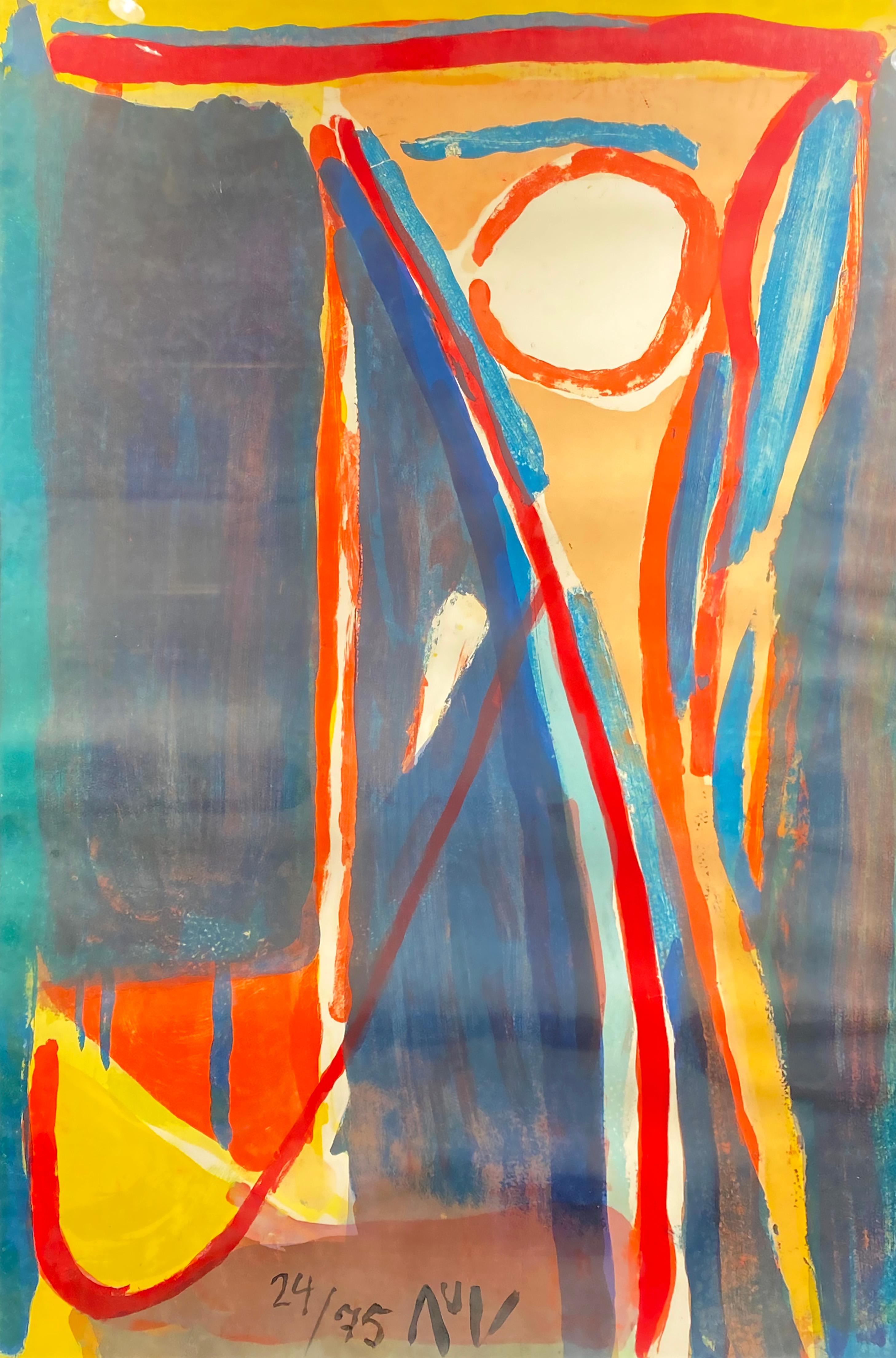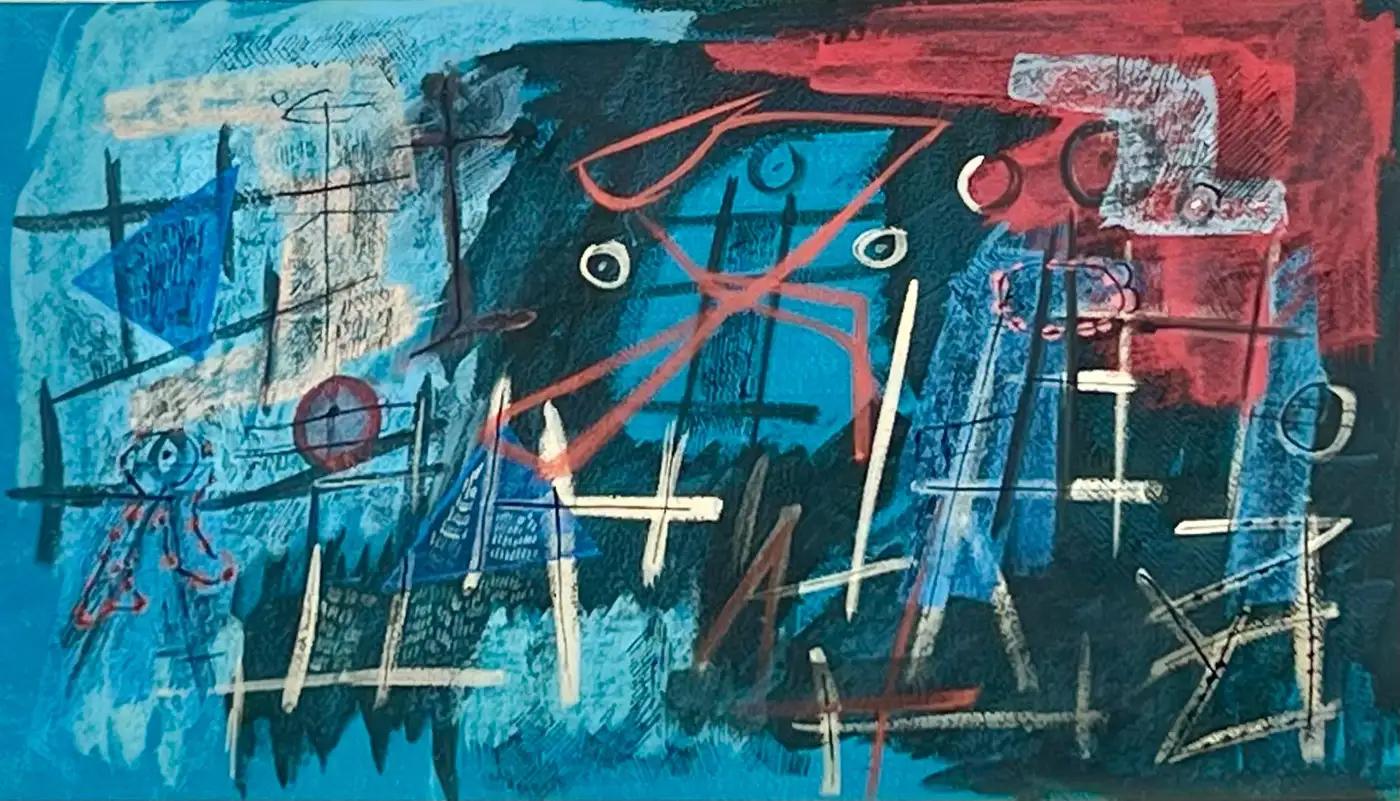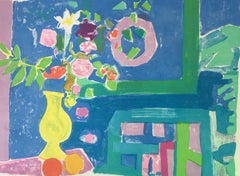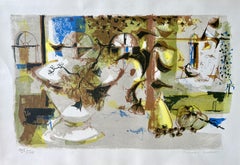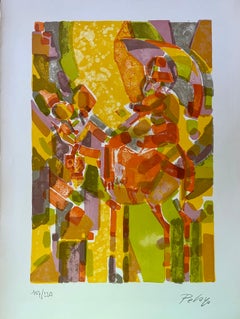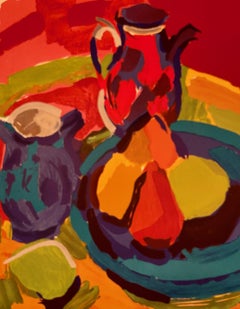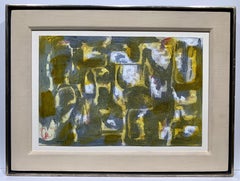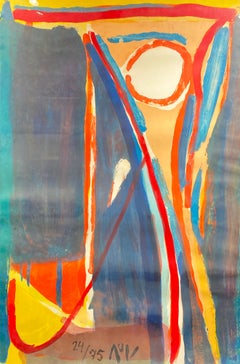Items Similar to abstract composition
Want more images or videos?
Request additional images or videos from the seller
1 of 6
Marie Raymondabstract compositionmid 20th Century
mid 20th Century
$600
$75020% Off
£457.79
£572.2320% Off
€521.15
€651.4420% Off
CA$843.31
CA$1,054.1320% Off
A$927
A$1,158.7520% Off
CHF 486.67
CHF 608.3420% Off
MX$11,022.69
MX$13,778.3620% Off
NOK 6,249.95
NOK 7,812.4420% Off
SEK 5,693.03
SEK 7,116.2920% Off
DKK 3,893.84
DKK 4,867.3020% Off
About the Item
This color lithograph is part of my private collection since the 1970's. Marie Raymond was a pioneer post WWII painter of her generation. She was a lyrical abstractionist of her times in the mid 20th century. She organized a salon, known as the lunis de Marie Raymond and received the prestigious Kandinsky prize in 1949.
- Creator:Marie Raymond (1908 - 1989, French)
- Creation Year:mid 20th Century
- Dimensions:Height: 16 in (40.64 cm)Width: 10 in (25.4 cm)
- More Editions & Sizes:128/220 limited editionPrice: $950
- Medium:
- Movement & Style:
- Period:
- Condition:This color lithograph is in very good condition.
- Gallery Location:Belgrade, MT
- Reference Number:1stDibs: LU2495214802462
About the Seller
5.0
Vetted Professional Seller
Every seller passes strict standards for authenticity and reliability
Established in 2020
1stDibs seller since 2023
22 sales on 1stDibs
Typical response time: 18 hours
- ShippingRetrieving quote...Shipping from: Belgrade, MT
- Return Policy
More From This Seller
View AllApprouve' par l'artiste
By Roger Bezombes
Located in Belgrade, MT
This lithograph is part of my private collection. It is limited in edition artist pencil signed lower right and is in very good condition. Roger Bezombes a print maker born in Paris ...
Category
Mid-20th Century Abstract Expressionist Landscape Prints
Materials
Lithograph
$240 Sale Price
29% Off
Nature Morte
By Michel Rodde
Located in Belgrade, MT
This lithograph is part of my private collection since 1970's. It is pencil signed by the artist and numbered 198/220. Guilde del la Gravure .
Category
Mid-20th Century Abstract Expressionist Abstract Prints
Materials
Lithograph
untitled, color abstract, original lithograph
Located in Belgrade, MT
This piece is part of my private collection of 20th Century artists that were part of the School of Paris era. This piece is original and signed by Pelayo and numbered.
Category
Late 20th Century Conceptual Abstract Prints
Materials
Paint, Acrylic, Lithograph
$320 Sale Price
20% Off
Nature Morte
By (circle of) Pierre Ambrogiani
Located in Belgrade, MT
This colorful lithograph is part of my private collection.
It is a limited edition , 1 print available, signed and numbered 25/150. It is in very good condition. Vibrant and colorful.
Category
Mid-20th Century Abstract Expressionist Abstract Prints
Materials
Lithograph
$580 Sale Price
51% Off
colorful landscape abstract Landschaftsszene
By Pawel Kontny
Located in Belgrade, MT
Pawel Kontny was born in Poland, he began with sketching wartime scenes combining abstract with realism. He exhibited throughout Europe. This piece is a part of my private collection...
Category
Mid-20th Century Realist Landscape Prints
Materials
Lithograph
$450 Sale Price
25% Off
Les Baigneuses Lithograph, Surrealist Style, Mid-20th Century, Signed
By André Marchand
Located in Belgrade, MT
This lithograph Les baigneuses ( The bathers) by Andre Marchand is part of my private collection since the 1970's. It is in very good condition, artist pencil signed in the lower lef...
Category
Mid-20th Century Surrealist Abstract Prints
Materials
Lithograph
You May Also Like
Untitled Abstraction
By Rolph Scarlett
Located in Summit, NJ
Gorgeous gouache on paper by Rolph Scarlett c. 1950s. The piece is in perfect condition. Unframed it measures 13.75 high by 16 wide. It is signed "Scarlett" lower right.
Category
1950s Abstract Abstract Paintings
Materials
Gouache
Untitled Abstract Expressionist composition
By Eve Peri
Located in Wilton Manors, FL
Beautiful ca. 1955 oil painting by American artist, Eve Peri. Oil on illustration board, panel measures 10 x 15 inches; 15.75 x 20.75 inches framed. Signed lower left. Excellent condition.
Vintage...
Category
Mid-20th Century Abstract Abstract Paintings
Materials
Oil, Illustration Board
$975 Sale Price
35% Off
Abstract (Edition 24/75)
By Bram Van Velde
Located in Missouri, MO
Abstract (Edition 24/75)
By Bram van Velde (1895-1981)
Signed and Numbered Bottom Center
Without Frame: 37" x 24"
With Frame: 37.75" x 24.75"
Bram (Abraham Gerardus) van Velde was a Dutch painter known for an intensely colored and geometric semi-representational painting style related to Tachisme*, and Lyrical Abstraction*. He is often seen as member of the School of Paris* but his work resides somewhere between expressionism* and surrealism*, and evolved in the 1960s into an expressive abstract art. His paintings from the 1950s are similar to the contemporary work of Matisse, Picasso and the abstract expressionist Adolph Gottlieb. He was championed by a number of French-speaking writers, including Samuel Beckett and the poet André du...
Category
20th Century Abstract Abstract Prints
Materials
Lithograph
Price Upon Request
Abstract Expressionist Painting (Mid-century Modern action composition)
Located in Wilton Manors, FL
Untitled Abstract Expressionist painting, 1957
Oil on canvas measuring 18 x 30 inches.
Signed with monogram and dated lower right.
Two repair patches on back on painting.
Artist...
Category
1950s Abstract Expressionist Abstract Paintings
Materials
Oil, Canvas
Untitled
By Ruth Leaf
Located in San Francisco, CA
This artwork "Untitled" c.1970, is an original woodcut monoprint on artisanal hand made paper by noted American artist Ruth Leaf, 1923-2015. It is hand signed and numbered 1/1 in pen...
Category
Late 20th Century Abstract Expressionist Abstract Prints
Materials
Monoprint
Abstract Composition
By Louis Schanker
Located in Wiscasett, ME
Tempura on heavy paper, signed and dated 1945 lower left. The piece measures 23" x 30" including the frame and presents very well overall.
Provenance:
Willard Gallery, NYC
Brad...
Category
1940s Abstract Abstract Drawings and Watercolors
Materials
Tempera, Watercolor
More Ways To Browse
Bernd Zimmer
Birth Of Venus Botticelli
Calder Dlm
Calder Lithograph 1972
Charlie Waite
Ellsworth Kelly Galerie Maeght
Expressionist Erotic Art
Georges Chakra
Gerhard Richter Signed
Gudmund Olsen
Had Gadya
Howardena Pindell
Ida Shoichi
Jamie Hewlett
Jan Sawka
Jasper Johns Whitney
Jaune Quick To See Smith
Joan Miro Quelque Fleur Pour Des Amis

